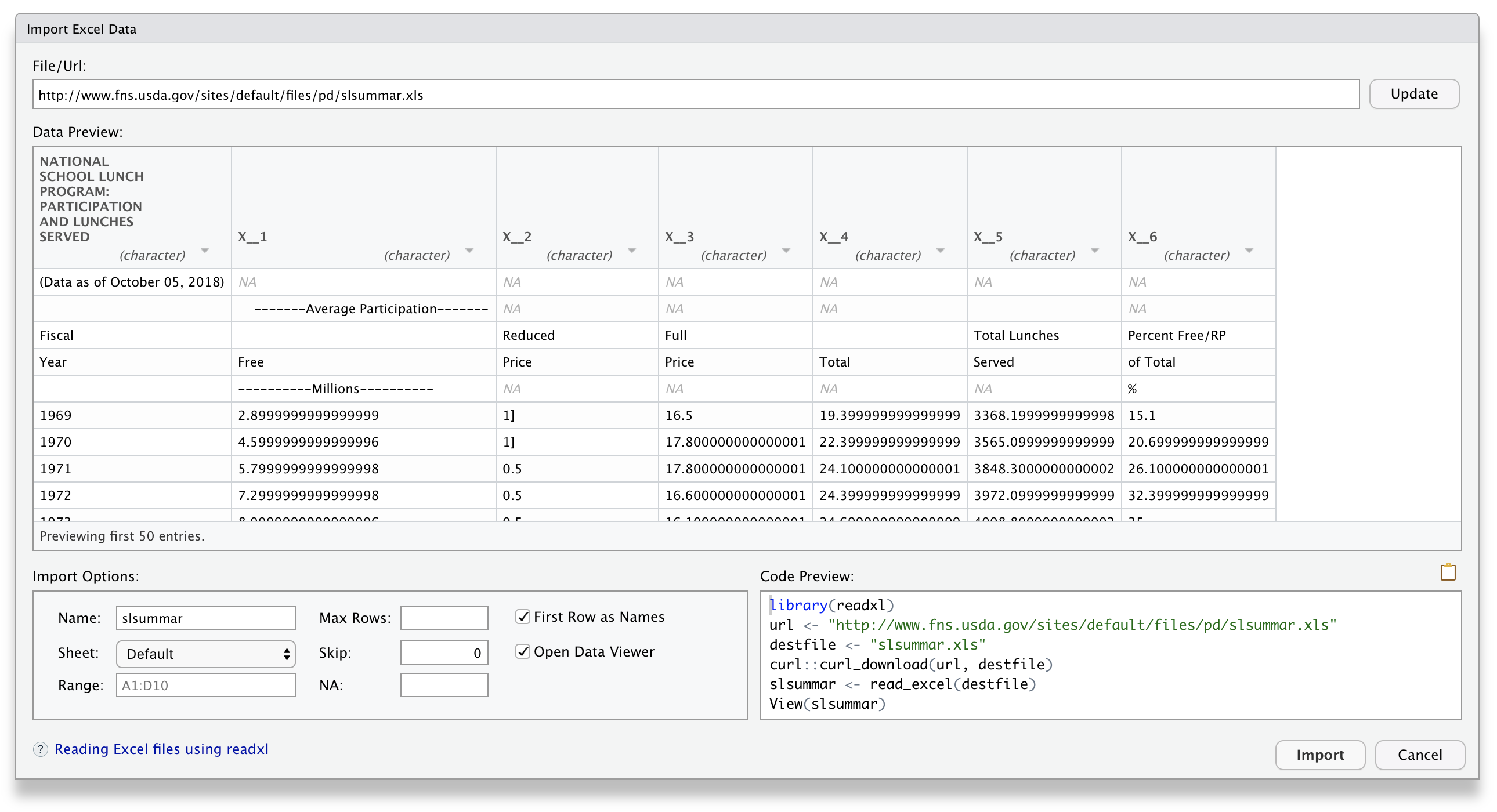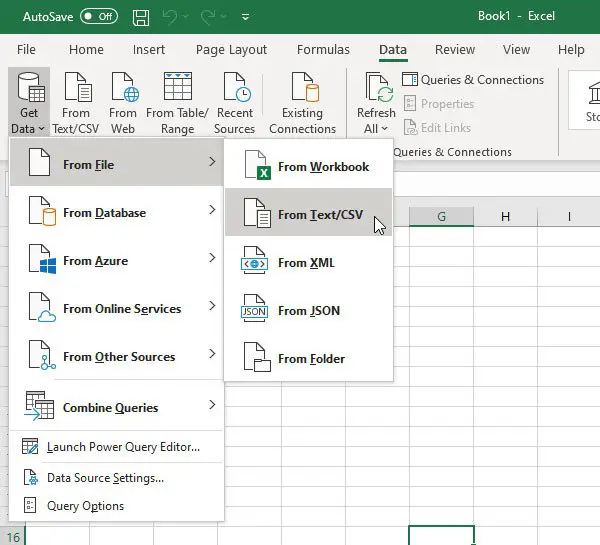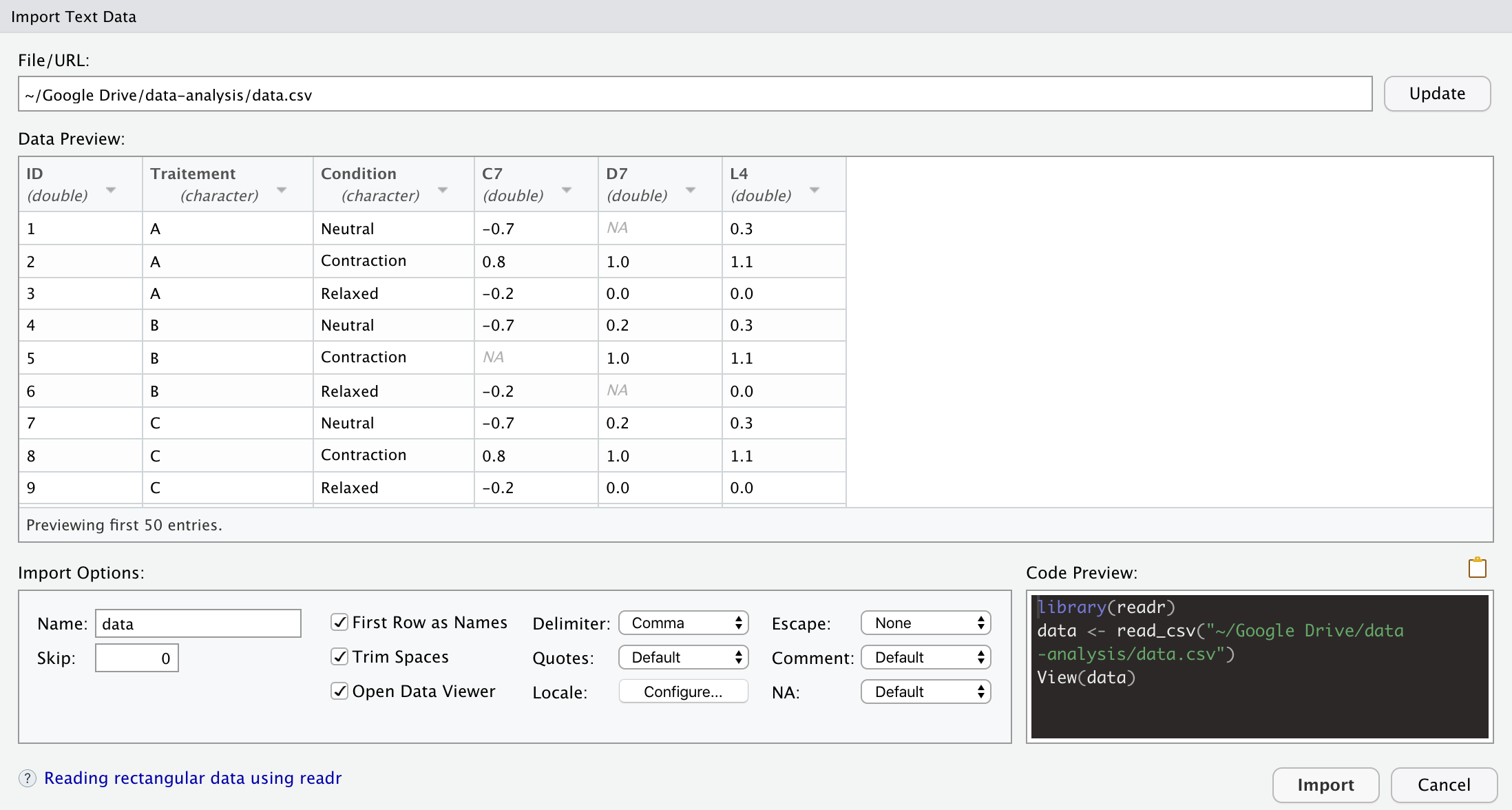Excel For Mac How To Import Data From Folder
- Excel For Mac How To Import Data From Folder To Pdf
- How To Import Data Into Excel
- Excel For Mac How To Import Data From Folder Command
- Excel For Mac How To Import Data From Folder To Computer
You can convert and open spreadsheets in Numbers on iPhone, iPad, iPod touch, Mac, or online at iCloud.com.
Convert and open spreadsheets in Numbers on iPhone or iPad
You can work with a variety of file formats in Numbers on your iPhone or iPad. Check which formats are compatible with Numbers on iPhone and iPad.
Aug 20, 2015 Simply enter a SQL statement, click Run Query to make sure it works. Once it does, click Return Data to drop your data right back into your worksheet. And that’s it; your data is now in your Excel workbook, live and ready to use in Excel 2016 for Mac or Excel for Windows! Working with a third-party data provider works the exact same way. Jul 21, 2019 In Excel, follow these steps: Click Data- Get Data - From File - From Folder. In the Folder window click Browse navigate to the folder, then click OK. When the list of files appears, click the Transform Data button. The Power Query Editor window opens. On the Extension column filter to only include the.xlsx files.
Convert a Numbers spreadsheet in Numbers on iPhone or iPad
If you want to open a Numbers spreadsheet in another app like Microsoft Excel, use Numbers to convert the spreadsheet into the appropriate format.
- In Numbers, open the spreadsheet that you want to convert, then tap the More button .
- Tap Export.
- Choose a format for your spreadsheet. For example, to open your Numbers spreadsheet in Microsoft Excel, choose Excel.
- Choose any additional options in the window that appears. For example, when exporting to Excel you can choose whether to create a worksheet for each table or for each sheet. If you create a separate worksheet for each table, you can choose whether to include a summary worksheet with links to all the tables.
- Choose how you want to send your spreadsheet, like with Mail or Messages.
Open a file in Numbers on your iPhone or iPad
To open a file like a Microsoft Excel spreadsheet on your iPhone or iPad, tap the file in the spreadsheet manager. If you don’t see the spreadsheet manager, tap the Back button (on an iPhone or iPod touch) or Spreadsheets (on an iPad), then tap the file that you want to open. If a file is dimmed, it’s not in a compatible format.
You can also open a file in Numbers from a different app like the Files app, or from an email:
- Open the other app, then select the spreadsheet or attachment.
- Tap the Share button .
- Tap Copy to Numbers. The original file remains intact.

After the file opens, you might get a message that the file was last edited in an app other than the most recent version of Numbers. Tap Done to open the file in Numbers.
Convert and open spreadsheets in Numbers for Mac
You can work with a variety of file formats in Numbers for Mac. Check which formats are compatible with Numbers for Mac.
Convert a Numbers spreadsheet in Numbers for Mac
If you want to open a Numbers spreadsheet in another app like Microsoft Excel, use Numbers to convert the spreadsheet to an appropriate format.
- In Numbers, open the Numbers spreadsheet that you want to convert.
- Choose File > Export To, then select the format.
- In the window that appears, you can choose a different format or set up any additional options. For example, you can require a password to open an exported PDF, or choose the format for an exported Excel spreadsheet.
- Click Next.
- Enter a name for your file and select a folder to save it to.
- Click Export.
To send a file in a specific format through Mail, Messages, AirDrop, or Notes, choose Share > Send a Copy, choose how you want to send the spreadsheet, then choose a format.
Open a file in Numbers for Mac
You can open a file from the Finder or from the Numbers app:
- From the Finder, Control-click the file, then choose Open With > Numbers. If Numbers is the only spreadsheet app on your Mac, you can just double-click the file.
- From the Numbers for Mac app, choose File > Open, select the file, then click Open. If a file is dimmed, it’s not in a compatible format.
When the file opens, you might get a message that the spreadsheet will look different. For example, Numbers notifies you when fonts are missing. You might see also see warnings when you open spreadsheets created in older versions of Numbers.
Convert and open spreadsheets in Numbers for iCloud
Numbers for iCloud lets you open, edit, and share your files from a supported browser on a Mac or PC. Check which formats are compatible with Numbers for iCloud.
Convert a Numbers spreadsheet in Numbers for iCloud
- Sign in to iCloud.com with your Apple ID.
- Click Numbers.
- In the spreadsheet manager, click the More button on the file you want to convert, then choose Download a Copy. If you have the spreadsheet open, click the Tools button in the toolbar, then choose Download a Copy.
- Choose a format for the spreadsheet. The file begins to download to your browser’s download location.
Open a file in Numbers for iCloud
- Sign in to iCloud.com with your Apple ID.
- Click Numbers.
- Drag the file you want to upload into the spreadsheet manager in your browser. Or click the Upload button , select the file, then click Choose.
- Double-click the file in the spreadsheet manager.
Check file format compatibility
Formats you can open in Numbers


You can open these file formats in Numbers on iPhone, iPad, Mac, and online at iCloud.com:
- All Numbers versions
- Microsoft Excel: Office Open XML (.xlsx) and Office 97 or later (.xls)
- Comma Separated Values (.csv)
- Tab-delimited or fixed-width text files

Formats you can convert Numbers spreadsheets into
Numbers on iPhone or iPad:
- Microsoft Excel Office Open XML (.xlsx)
- Comma Separated Values (.csv)
- Tab Separated Values (.tsv)
Numbers for Mac:
- Numbers ’09
- Microsoft Excel: Office Open XML (.xlsx) and Office 97 or later (.xls)
- Comma Separated Values (.csv)
- Tab Separated Values (.tsv)
Numbers for iCloud:
- Microsoft Excel Office Open XML (.xlsx)
- Comma Separated Values (.csv)
Learn more
- Numbers on iPhone, iPad, Mac, and online at iCloud.com use the same file format. If you create or edit a spreadsheet in Numbers on one platform, you can open it in Numbers on any of the other platforms.
- You can update to current versions of Numbers on your iPhone, iPad, or iPod touch from the App Store. To update Numbers for Mac, use the App Store app on your Mac.
- If you convert a Numbers spreadsheet into Numbers ’09-compatible spreadsheet, learn more about changes that happen when you export to iWork ’09.
Importing SecureCRT® Sessions from a Data File
You can find the Import Arbitrary Data From File To SecureCRT Sessions script discussed in this tip on the VanDyke Software Scripting Forum.
Introduction
SecureCRT sessions can be imported from an external source if you keep a list of the servers, routers, and other devices that you need to connect to saved in a .csv or other type of data file. With a data file, you can use a script to import the data into SecureCRT sessions, rather than manually creating them one at a time.
In this tip, we explain how to set up an example data file and provide an example script code for you to use and modify for your specific setup. You only need a few basic script-editing skills to get started (more extensive knowledge may be required to customize the example script to meet your needs).
The example script gathers information about your host machines from your .csv data file in order to create the .ini files that will become your SecureCRT sessions. There are comments within the script code explaining the expected format and organization of the data file. The comment lines in the script begin with a single character (a ' single quote or 'tick' character for VBScript and a # character for Python).
The following steps show you how you might use the techniques described in the script to generate sessions from your data file.
Setting up the data file
The first thing you'll need is a data file that contains the host information you wish to import into SecureCRT as sessions. The format below most closely matches the format that the script uses. If your data file only includes some of the information, simply make sure that the header line in your data file includes only those fields that the rest of your data file contains. The following is an example of what your data file might look like:
hostname,protocol,username,folder,emulation192.168.0.1,SSH2,root,Linux Machines,XTerm
192.168.0.2,SSH2,root,Linux Machines,XTerm
10.0.100.1,SSH1,admin,CISCO Routers,100,VT100
10.0.101.1,SSH1,admin,CISCO Routers,101,VT100
myhost1.domain.com,SSH2,administrator,Windows Servers/1st Floor,VShell
myhost2.domain.com,SSH2,administrator,Windows Servers/2nd Floor,VShell
myhost3.domain.com,SSH2,administrator,Windows Servers/3rd Floor,VShell
myhost4.domain.com,SSH2,administrator,Windows Servers/4th Floor,VShell
The first line of your data file names the fields used and their order. In the example above, the header line of the data file is the first line:
hostname,protocol,username,folder,emulation
The remaining lines in the data file are lines that have actual data to be imported, whereas the first line is simply a template that instructs the import script how to interpret the fields on each remaining line.
The example data file shown above uses a comma character as the delimiter between fields, but the script can work using a comma, space, semicolon, or tab as the delimiter. If your delimiter character is not a comma, simply modify the value of the g_strDelimiter variable in the script to match your specific delimiter character(s).
Note: The value of the emulation field must match a valid SecureCRT emulation option as displayed in the Terminal option in the Terminal / Emulation category of the Session Options dialog. However, the following protocols are not currently supported for import using this script: Serial, TAPI, and Raw.
The field keywords that the script is designed to recognize as valid header row components are as follows:
| session_name | The value that will be used for the session’s name. If this field does not exist, the hostname field is used as the session_name. |
| folder | A relative folder path for the specified session (not including the session name) as displayed in the Session manager. Any folder that does not exist will be automatically created as the script runs. |
| hostname | Required. The hostname or IP address for the remote server. |
| protocol | Required. The protocol to be used for connecting with the session (SSH2, SSH1, Telnet, or RLogin). |
| port | The port on which the remote server is listening. |
| username | Username for the account on the remote server. |
| emulation | The emulation (vt100, xterm, etc.). |
| description | Comment/description. Multiple lines are separated with r. |
Excel For Mac How To Import Data From Folder To Pdf
You might have already noticed that the example data file above doesn't include a session_name field. When there isn't a session_name field, the hostname information will be used as both the hostname and the session name when importing.
Running the script
Once you have made the necessary configuration changes to your data file and/or the script, you can launch the script by opening up SecureCRT and choosing Run... from the main Script pull-down menu.
How To Import Data Into Excel
The first action the script will take is to prompt you for the location of your data (CSV) file.
Once you have specified which data file to use for importing session configurations, the script will attempt to create sessions using the information in your data file. After the work has been completed, the script will write information to a log file and display the contents of the log file.
For example:
Excel For Mac How To Import Data From Folder Command
After the script has completed, simply close SecureCRT's Session Manager and then open it again to see the sessions that were added.
Excel For Mac How To Import Data From Folder To Computer
Note: If a session was found to already exist, the imported session will have a time stamp appended to its name to avoid overwriting any existing sessions that have the same name.